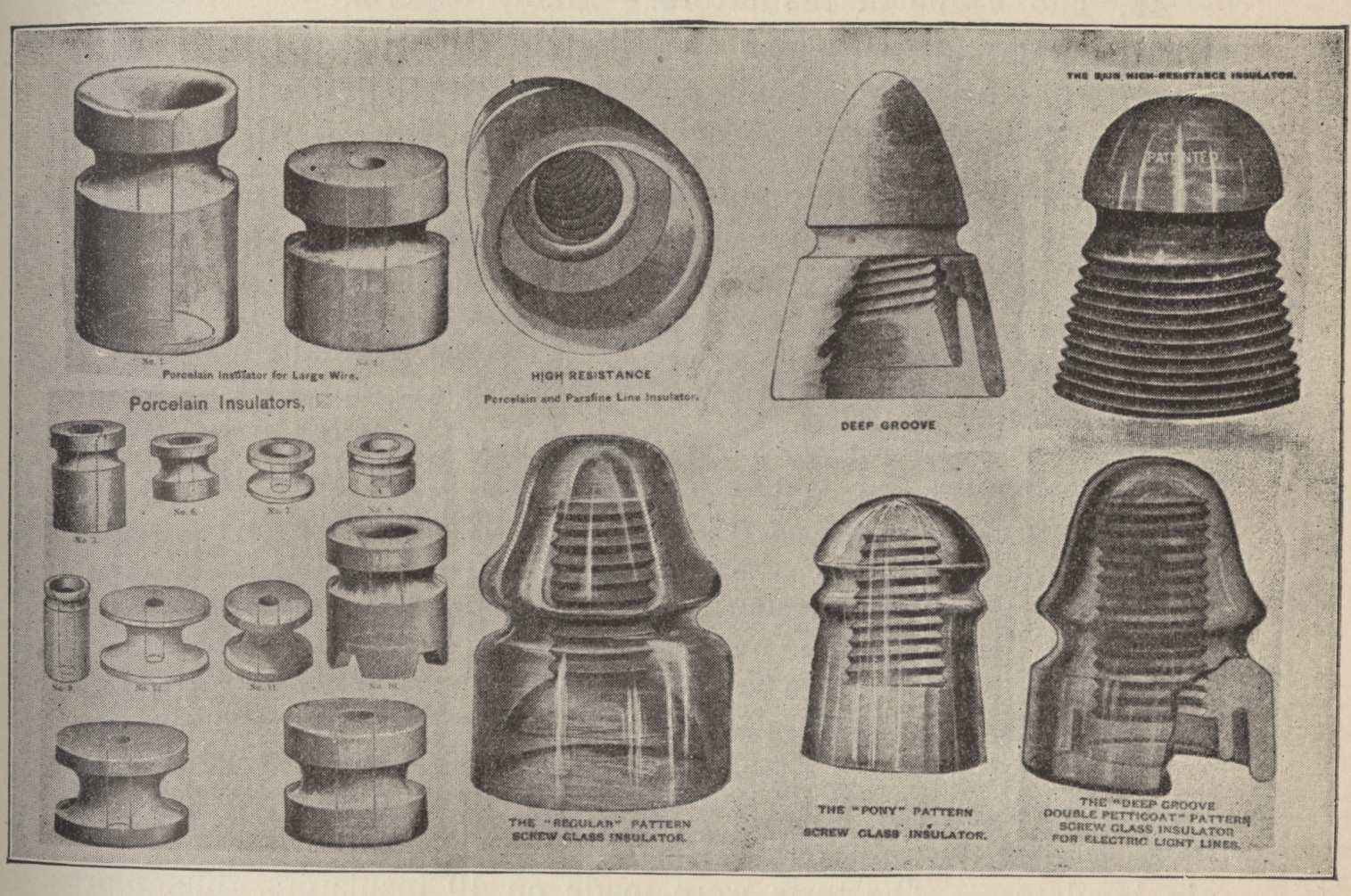One of the questions people often ask me is why haven’t electric power distribution lines been placed underground and out of sight. The answer is complex, involving mostly the difficulty of preventing alternating current under large voltages from arcing to the surrounding ground. In aerial high-tension transmission lines, the space between the cables and the ground, rather than coatings of insulating material, provides the primary protection against flashover.
Even the best armored cables are liable to be ruined by a single stroke of the pickaxe. Arthur Abbott, The Electrical Transmission of Energy
One of the IEEE History Center’s oldest sources on the subject of aerial versus underground circuits — the 1904 edition of Arthur Vaughan Abbott’s The Electrical Transmission of Energy — is also one of the gems in the History Center’s book collection. Arthur Abbott (1854-1906) was an early AIEE member who joined as an associate in 1890, and was promoted to member in 1895. It was interesting to read what one of the governing textbooks at the turn of the century, and therefore at the origins of the age of electrification, had to say about the matter, and how choices made in those led to our current (pun intended) visual landscape. It turns out that, even as early as 1904, “The rapid multiplication of electrical circuits…has increased the number of aerial wires to such an extent as to become an unbearable street obstruction.” (Abbott). He refers in delightfully energetic language to “slovenly work…poor engineering, a pennywise and pound-foolish desire to economize copper or bad judgement as to probable traffic demands, is often responsible for a mess of wiring that is a disgrace to electrical science.”
Despite the early desire to place alternating current distribution underground, obstacles quickly became apparent. “Even the best armored cables are liable to be ruined by a single stroke of the pickaxe.” Abbott observed drily. It was “difficult to build a cable…to be self-protective against destructive influences constantly at work.” Water underground was one enemy, resulting in the circuits becoming “much injured,” and the gas mains that often ran in proximity to the electrical were another. “Perhaps the greatest danger to which underground subways [i.e. electrical conduits] are exposed is the accumulation of illuminating gas.” The gas pipes of that time being constructed of cast iron, “which permits a considerable leakage of gas directly through the material of the pipe itself….Statistics of some cities show that gas companies are unable to account for some 15 to 20 percent of the gas manufactured by them.”
The economics of the conduits also mitigated against underground installations. The cost per mile of digging up the streets, laying conduits and repaving being several times the cost of pole-carried distribution. There were a number of underground conduit systems available. Abbott lists the Valentine Conduit, Wyckoff Conduit, Chenowith Conduit, the terra-cotta separate duct system, the McRoy Multiple-Duct Conduit, the Callander (sometimes spelled Callender) Solid System (that “splendid but expensive device”), the Camp duct, the Brooks system, the Kennedy system, and Ferranti Mains.
Another problem with underground mains was that the economics of laying the smallest possible diameter main conflicted with the requirement of laying large ones to provide insulation and heat dissipation. “With the extending tendency to transmit energy by means of alternating currents, the question of the effect of metallic structures for conduits, assumes considerable importance…Some French experiments upon lead-covered cables…show the conductors to be subjected to a loss of energy varying from 1 to 2 percent…with one extraordinary instance of 35 percent loss.”
As of Abbott’s writing in 1904 (by which time his text was already in its fourth edition), there were still many unknowns. “The safe carrying capacity of underground cables is another point upon which there is a paucity of information.”
Not that aerial transmission of electrical power wasn’t without its problems. “Resistance of the line insulation varies from time to time, depending on the state of the weather, the cleanliness of the insulating surfaces, and the number of points of attachment of the conductor to the insulators. Owing to these indeterminate factors, it is impossible to predict or calculate, except within very wide limits, the insulation resistance of such lines.” Abbott cautioned that “in aerial circuits, unusual snow or sleet loads, high winds, the abrasion of tree branches, etc., are constantly tending to destroy the conductors.” Wildfire smoke (carbon being an efficient conductor) can cause high-voltage lines to arc to ground.
Although the voltages have increased (from 10kV in Abbott’s day), materials have changed (e.g. steel replacing cast iron), and knowledge greatly increased, Abbott’s book, with its charming prose, takes us back to the beginnings of an art, and shows us the timelessness of the forces which shape engineering decisions.
The IEEE History Center is partially funded by donations to the History Fund of the IEEE Foundation www.ieeefoundation.org/donate_history
